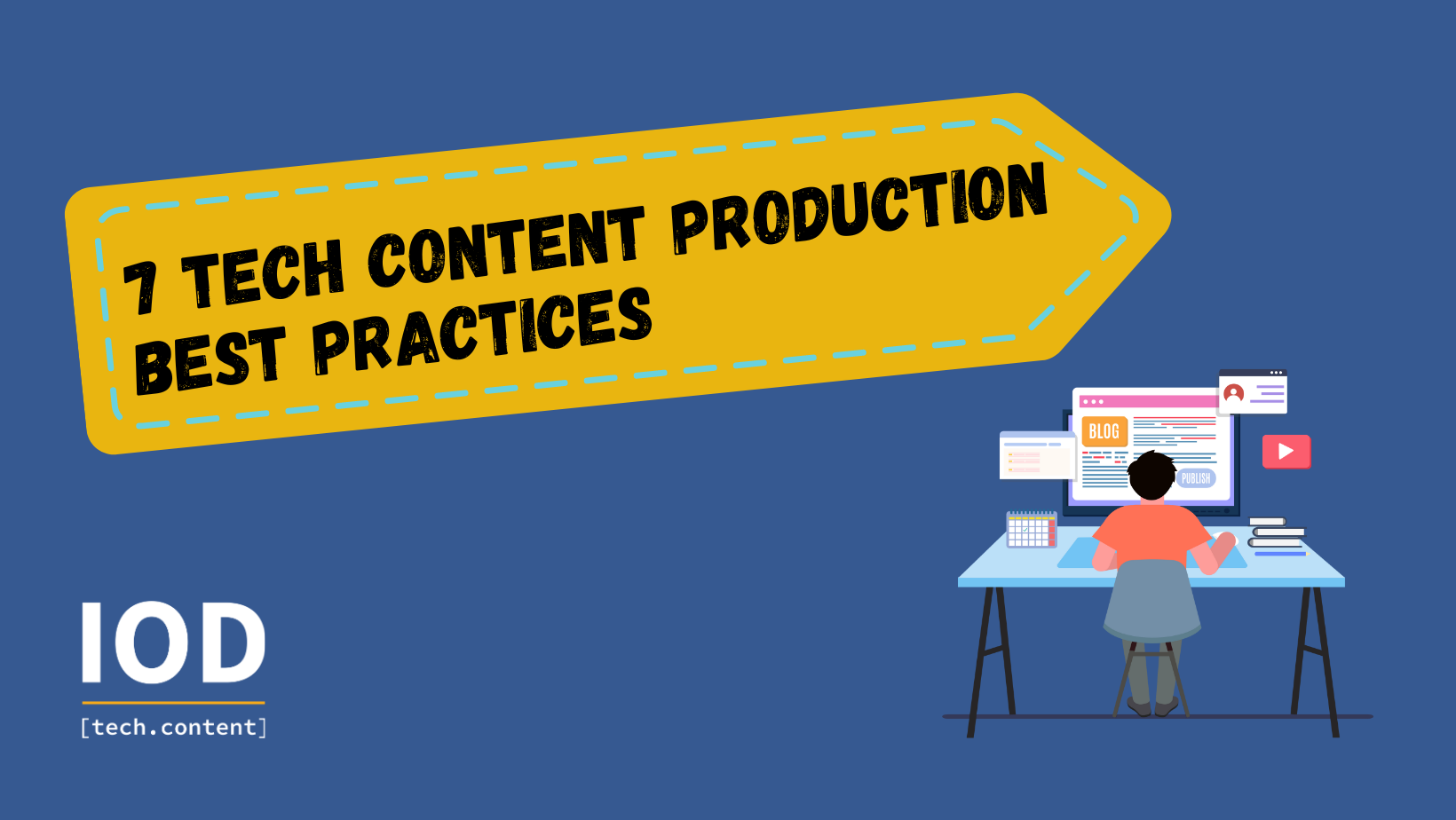Tech content is a valuable commodity. Enterprises like AWS rely on a steady flow of in-depth content to engage and educate their audiences. But most companies can’t keep up. They rely on marketing writers rather than subject-matter experts (SMEs) and create materials that are best described as “fluff.”
As a result, high-quality, useful tech content is surprisingly scarce. Having worked with leading tech companies—and a few generations of startups—we know a lot about the challenges they face. We also understand how to address them.
For example, one of IOD’s enterprise clients launched a DevOps channel not long ago. Each month they published at least seven long-form, expert articles, resulting in a surge of organic traffic that quadrupled their overall revenue from that channel.
For a deeper dive into these stories and the best practices that can turn a startup into a category leader, download the full ebook.
In the ebook, we cover seven challenges and opportunities, starting with a concept that’s familiar to the IOD community: bridging the gap between tech and marketing. Today’s tech buyers have deep knowledge and hands-on experience with products and services. They often see marketing writing as shallow and uninteresting. Reaching that audience requires the expertise of an SME combined with the strategic creativity of a marketer.
Second, we cover the challenge of ensuring separation of responsibilities. Creating high-quality content requires a team—researchers, writers, editors, designers, even fact-checkers. A scrappy little marketing team can’t meet the demands of a growing tech enterprise. Only a self-contained content machine can produce materials that improve brand reputation, rank well in search, increase product usage, and drive good leads.
The third challenge is shifting the leadership mindset. As a tech startup grows into a category leader, its content production methods must evolve. Content becomes a core element of business strategy, driven at the executive level. One example that demonstrates the effectiveness of content is the AWS Heroes program. AWS Heroes is a community of experts who share their knowledge. Every blog post, video, walk-through, and code snippet in the AWS Heroes Content Library helps users get the most out of AWS products. It’s a brilliant strategy. Ultimately, the community creates expert content that grows the business—at minimal cost to AWS.
The fourth challenge is all about breaking down marketing silos. In large organizations, teams often operate independently, leading to redundancy, inconsistent standards, lack of visibility, and difficulty scaling up. Even a world-class organization can struggle to solve this problem, as we discuss in the ebook.
Fifth, we face the challenge of internal contributor limitations. As a company grows, its in-house capabilities become stretched. An AI engineer who is building a new chat feature for product monitoring is unlikely to be available to help with marketing—and the more successful the business becomes, the less time R&D talent has to spare. Some companies try to train the marketing team or bring in expert freelance writers, but those tactics bring their own challenges. For example, managing a team of freelancers who need to be trained on your solution, messaging, and audience requires its own set of skills.
The sixth challenge is enforcing structured processes and standards. A small marketing team can create a few original blog posts each month, but try asking the same team to create several technical deep-dives, a monthly newsletter, and a few video assets in the same timeframe. That’s where workflows, quality standards, audits, and project management tools come into play.
As a bonus, we wrap up the ebook with a discussion of the advantages and realities of AI tools such as ChatGPT. While generative AI can help technical members of the team produce better marketing materials, it’s more difficult for AI to help marketers produce good tech content. Would you feel comfortable releasing a ChatGPT-written technical article to your audience without an SME validating it first?
With the right strategies and practices, growing tech companies can scale up content production as they become category leaders. Download the ebook for our best advice and insights into resolving these challenges.







